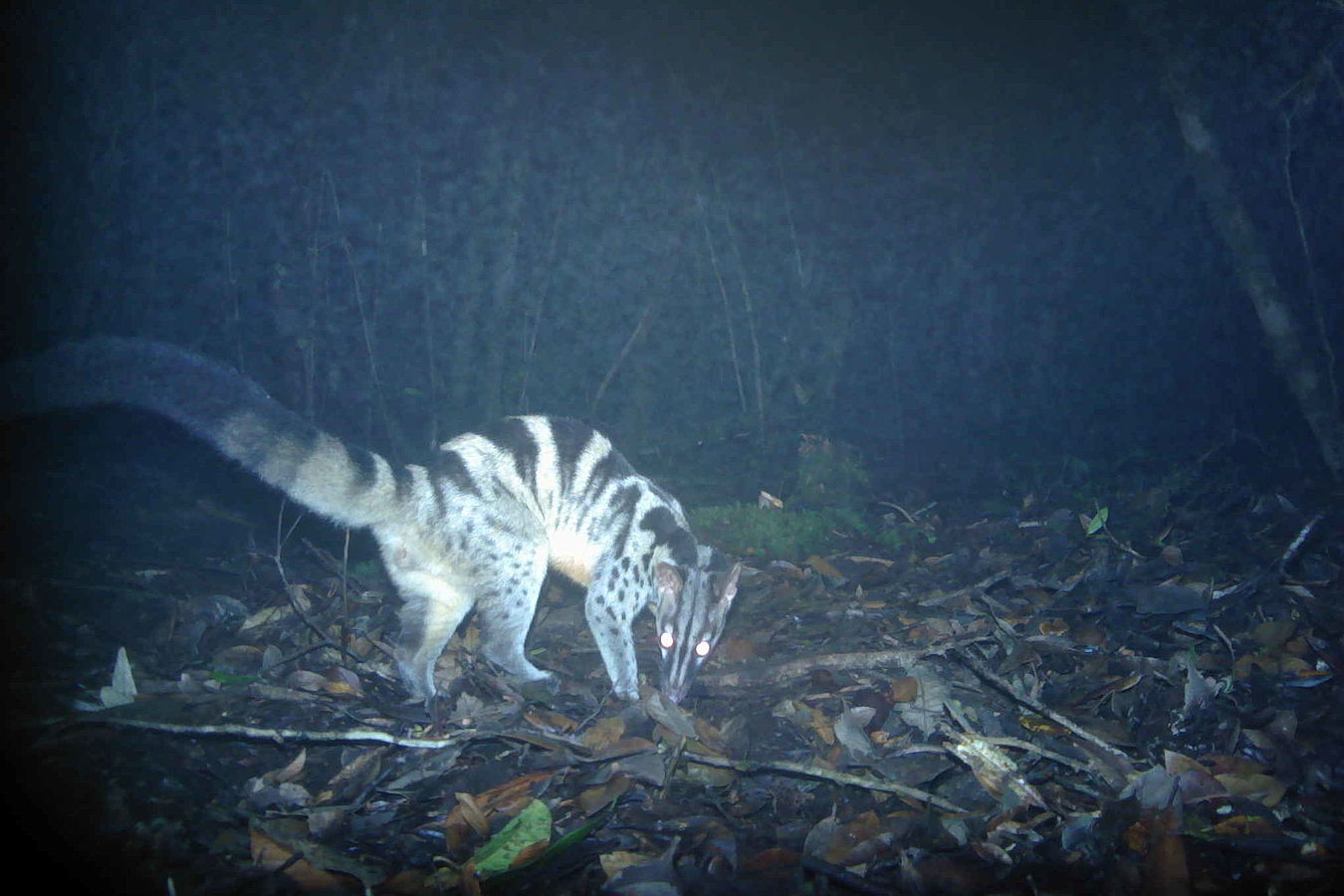New surveys have revealed surprising mammal biodiversity in Bidoup Nui Ba National Park (Bidoup Nui Ba NP), a large protected area located in the southern part of the Annamites range.

Owston's civet taken by camera-trap in Bidoup-Nui Ba NP | Copyright of Leibniz-IZW, Bidoup Nui Ba NP, and SIE
The presence of numerous rare and endangered mammals in Bidoup Nui Ba NP provides a ray of hope for the long-term conservation of Vietnam's unique biodiversity.
Since October 2019, Bidoup Nui Ba NP has cooperated with the Vietnamese Southern Institute of Ecology (SIE) and the German Leibniz Institute for Zoo and Wildlife Research (Leibniz-IZW) to conduct a first large-scale camera-trapping survey across the entire protected area. The first camera-trapping data from the ongoing study revealed an exceptionally high mammalian diversity with at least 21 mammal species, seven of which are globally threatened.
"We were thrilled to find such a diverse mammal community," said Dr Le Van Huong, director of Bidoup Nui Ba NP. "Rare animals that have slipped into extinction in other parts of Vietnam still thrive in the forests of Bidoup Nui Ba NP. This protected area is a valuable landscape for Vietnam and for global biodiversity conservation."
The most important result of the species survey are several camera trap images of the large-antlered muntjac (Muntiacus vuquangensis), a critically endangered deer species only found in the Annamites ecoregion. Conservation scientists believe that the species has become extinct in most of its former Vietnamese range. After the first photographs of large-antlered muntjac were taken in 2017, these new records strengthen the assessment of scientists that Bidoup Nui Ba NP may be one of the last strongholds for this threatened species in Vietnam. Bidoup Nui Ba NP is therefore critical to the species' long-term survival.
In addition to the large-antlered muntjac, the camera-traps also recorded another species confined to the Annamites (an endemic), the Owston's civet (Chrotogale owstoni). This strikingly-patterned small carnivore is now close to extinction as a result of widespread poaching to supply the wildlife bushmeat trade in Vietnam. "We have currently surveyed half of the protected area and already collected seven records of the species. Bidoup Nui Ba NP is one of very few protected areas in Vietnam that have this high number of records of Owston's civet," said An Nguyen, project coordinator and a doctoral student at the Leibniz-IZW. "Our data indicate that a healthy population likely survives inside the national park."
One of the most unexpected findings was a set of images of an albino porcupine. Although porcupines are still relatively abundant across many protected areas in Vietnam, all-white porcupines are extremely uncommon.
The scientists were also very surprised to obtain numerous photographs of the sun bear (Helarctos malayanus). The species is now incredibly rare in the wild, partly because many of them have been caught and taken to bear bile farms throughout Vietnam. The last known photo of a sun bear in the wild was taken almost 20 years ago in Cat Tien National Park. The new photographs provide hope for this rare species in Vietnam, although this hope is tempered by the reality of poaching in Vietnam, as revealed by one of the camera-trap photos: One sun bear showed a large wound on its leg caused by a snare. "In Vietnam, poaching plays a major role in the loss of biodiversity. The presence of the endemic wildlife in Bidoup Nui Ba National Park compared to other protected areas in the Annamites shows how important and worth protecting this area is," Dr Andreas Wilting, scientist at the Leibniz-IZW explains.






